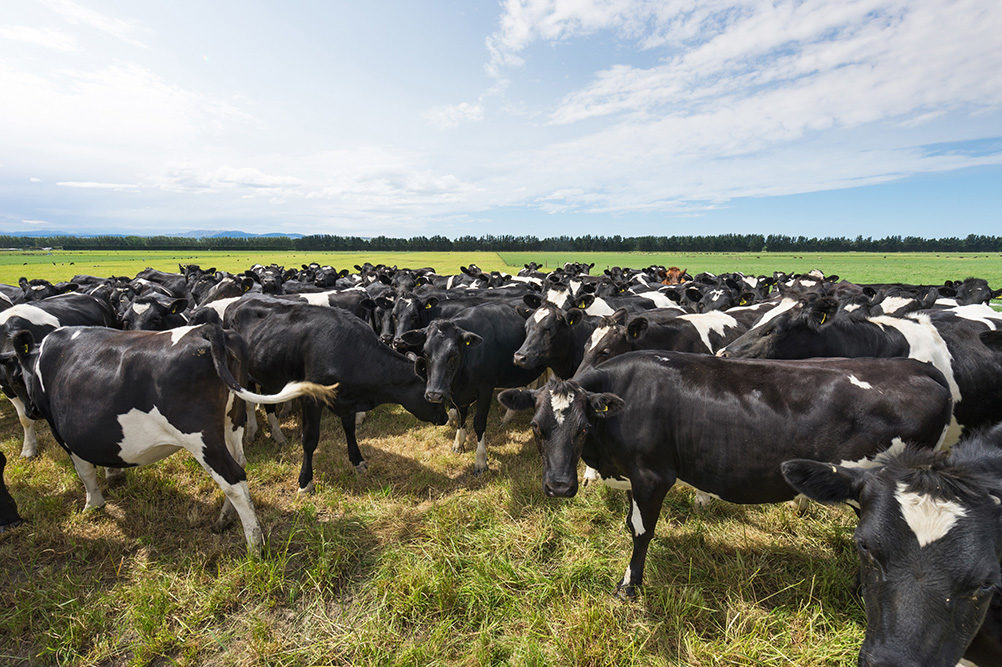Integrating dairy and beef production would reduce NZ’s annual greenhouse gas emissions from beef production by one fifth, according to new research reported by Scimex.
Scientists from the Netherlands and New Zealand created a model to simulate the impact of replacing beef breeding cows and calves with dairy beef animals. As well as reducing emissions, the authors say this system could also reduce the number of dairy calves slaughtered, without compromising the quality of meat produced.
The scientists involved are from AgResearch and Wageningen University, in the Netherlands
Research highlights are:
- Integrating dairy and beef production has the potential to reduce GHG emissions.
- Dairy beef calves had a 29% lower emission intensity compared to suckler-beef.
- The average emission intensity of beef production could be reduced by up to 22%.
The Abstract says:
Integrating dairy and beef production offers opportunities to reduce greenhouse gas (GHG) emissions of beef production, which is dominated by emissions related to maintenance of the breeding cow.
This study aims to quantify the GHG reduction potential of the New Zealand (NZ) beef sector when replacing beef breeding cows and their calves with dairy beef animals. To this end, we combined a cattle herd model of NZ beef and dairy production with GHG emission calculations of beef production.
We computed GHG emissions (to farm-gate stage) of the current amount of beef produced, while increasing the number of dairy beef calves at the expense of the number of suckler-beef calves. GHG emissions were 29% lower per kg carcass weight for dairy beef animals compared to suckler-beef animals.
The average emission intensity decreased from 21.3 to 16.7 kg CO2e per kg carcass weight (−22%) as the number of suckler-beef animals declined to zero and dairy beef animals increased. Integrating dairy and beef production would enable the NZ beef sector to reduce annual GHG emissions by nearly 2000 kt CO2e (i.e. 22% of the total sector’s emissions), while the dairy sector would improve their social licence to operate by reducing the number of surplus dairy calves slaughtered from 4-days old.
The paper notes that the beef sector is NZ’s third most important agricultural industry in terms of export revenues.
It also accounts for 9% of the country’s gross greenhouse gas emissions (excluding emissions related to land use and land use change), being responsible for an annual emission of 7128 kt of carbon dioxide equivalents.
To maintain its central role as an export country and limit the effects of climate change, the government has set a target to reduce all GHG emissions (excluding biogenic methane) to net zero by 2050 and to reduce biogenic methane emissions (largely from animal enteric methane) by 24 to 47% relative to 2017 before 2050.
The beef sector has not set a target yet, but mitigating GHG emissions of beef production will play an important role in meeting national targets, while ensuring the long-term survival of the beef sector.
Around 60% of beef produced in NZ originates from the traditional beef sector, while the other 40% comes from culled cows and slaughtered surplus calves (from four days old) from the dairy industry.
The origin of calves used to produce beef has an important impact on the level of GHGs emitted. Per kg beef, beef calves of dairy origin have a significantly lower emission intensity (kg CO2 equivalent) compared to their suckler-beef counterparts, because emissions from suckler-beef are dominated by the maintenance of the breeding cow, while in the case of dairy-based beef, those emissions are mainly attributed to milk.
The study aims to quantify the GHG reduction potential of the NZ beef sector when replacing beef breeding cows and calves with dairy beef animals. To this end, the research team created a model of the NZ cattle population and computed the GHG emissions per kg of suckler-beef and dairy beef.
GHG emission results were combined with the cattle population model to quantify the reduction potential in terms of GHG emissions when increasing the use of dairy beef animals at the expense of suckler-beef animals.
Link to research (DOI): 10.1016/j.agsy.2020.102936
Source: Scimex












